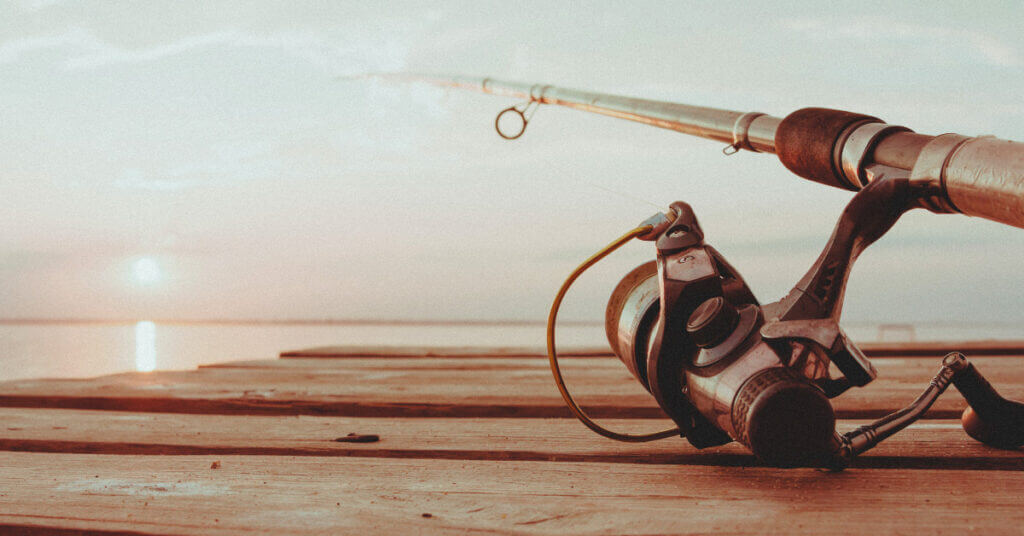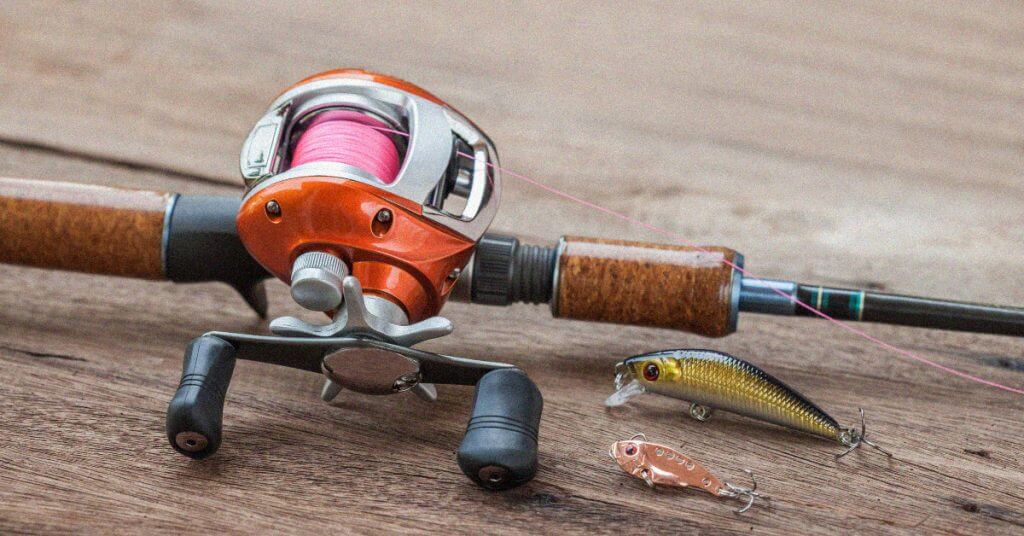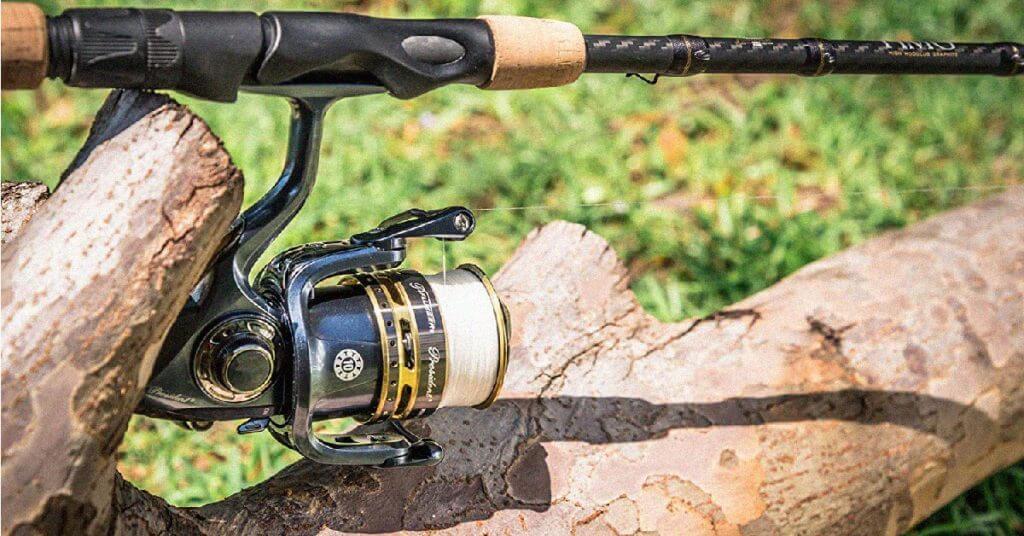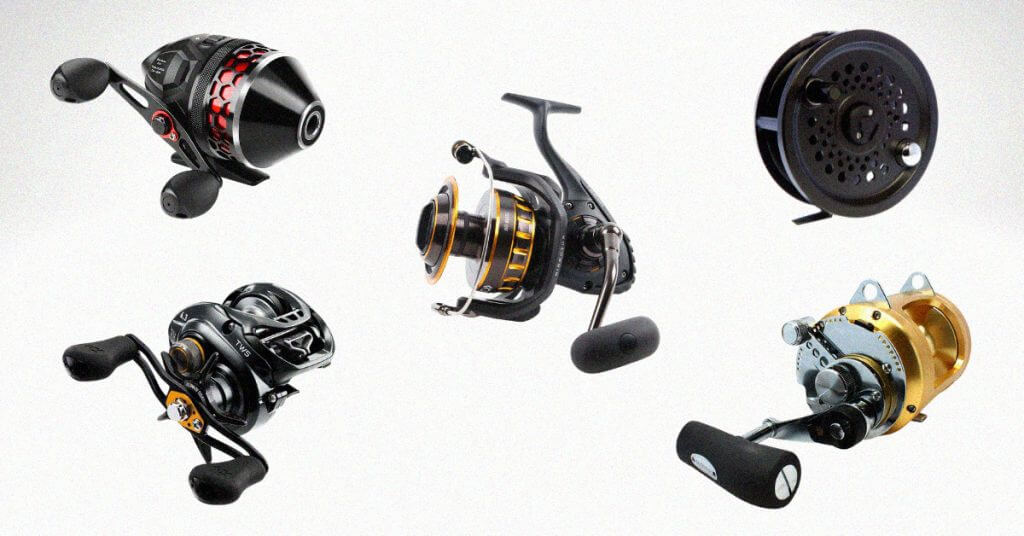I’ve used 100’s of spinning reels through my career and I’ve seen the improvements that the industry has made. It’s quite phenomenal how good these reels actually have become.
From their near silent casts down to their buttery smooth retrieves
In this best spinning reel for bass guide I’ll help you maneuver through reel terminology like MicroModule Gear Systems and 6S A-RB shielded stainless steel ball bearings, to help point you to what I think are the best reels on the market.
But in order to accurately compare some of my all-time favorite spinning reels of the past to the newer models, I set off on a weekend trip to a private trophy lake. It’s there that I put them all to the test.
Top 3 Spinning Reels on the Market
As a quick summary, here are my top three choices for best spinning reels based on my research and testing.
Table of Contents
Testing Procedure
I needed a destination that would provide a variety of fishing and casting situations, but also has a lot of bass which would allow me to test the drag system on each reel.
The location I chose was a private lake located in Southeast Louisiana.
This lake’s got it all and comes equipped with plenty of structure to fish along with a multitude of bass.
During my time on the water I specifically focused on these qualities that each reel possessed:
- Gear Ratio: There are so many lure specific bass reels that are being produced so having the right gear ratio is important. During my test I tried out these reels to see if their retrieve speeds held up to the manufacturers claim.
- Construction: Owning a tricked out reel is great, but finding one that’s going to last is as important as all the bells and whistles.
During my test I examined each reel and ranked each one according to the material used to make it and how well the reel is put together.
- Drag System: The improvements in the drag system of spinning reels in the last decade have been amazing. Not only does a great drag help with reducing line breakage, it also gives the angler an advantage when tiring out those big bass.
During my weekend I kept a keen eye (and ear) on the drag systems especially when those big fish made hard runs.
- Ball Bearings: The number and material makeup of ball bearings is one of the most important factors to look at when it comes to choosing the perfect spinning reel.
Smooth casts and retrieves is what it’s all about, and having high-quality stainless steel or ceramic bearings inside the reel can make a huge difference in performance.
Best Overall Spinning Reel for Bass
Shimano Stradic FL Spinning Reel
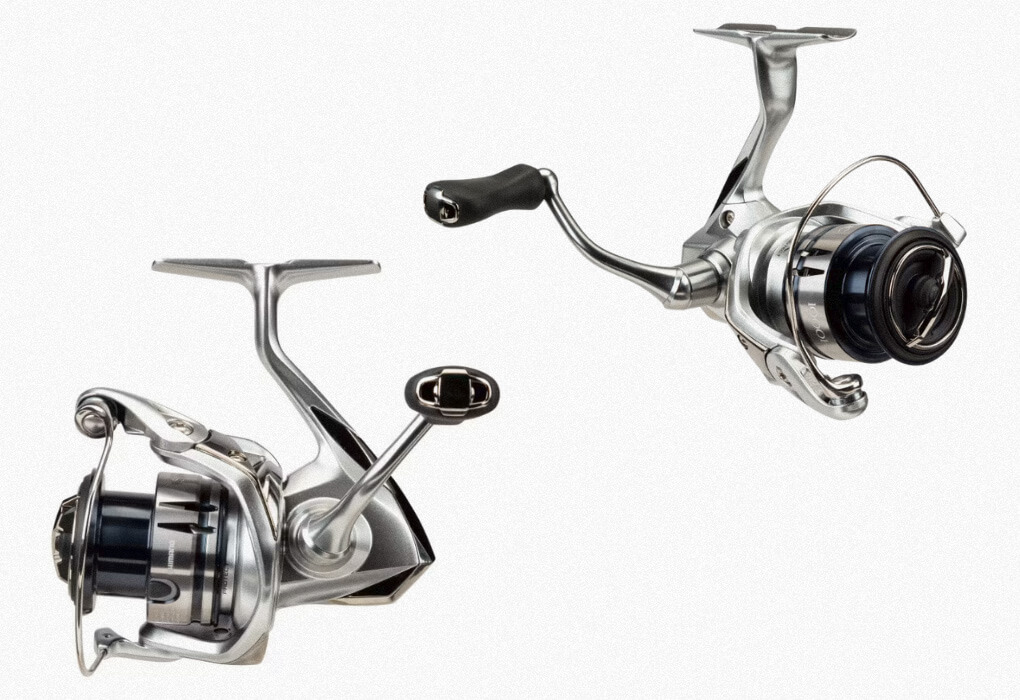
Specs
- Type: Spinning
- Gear Ratio: 6.0:1, 6.2:1, 6.4:1
- Weight: 9.3
- Bearings: 6+1
- Line Capacity: 14/165
Pros
Cons
Why We Chose It
The Stradic FL has loads of features that all come together to make one near-perfect specimen of a spinning reel.
The reel comes in three models with gear ratios of 6.0:1, 6.2:1, and 6.4:1.
And it’s available in right hand or left hand retrieval.
When I tested the reel the first thing I noticed was how hard the reel was.
What I mean by that is there is no flex in any section of the reel. It’s called Shimano’s HAGANE Body and it makes the reel work in unison without any play in any of the gears, reel seat, or spool.
This reel is ultra smooth when retrieving line.
Shimano’s MicroModule Gear System is made up of smaller teeth and sprockets that engage with one another. The smaller teeth mean a soother, quieter retrieve.
During my test I was able to catch four bass with the heaviest weighing 4.3 pounds. The reel performed fantastic through the hookset till I netted it and brought it in the boat.
The only drawback I found was that the drag wasn’t as smooth as some other reels that I tried out.
However, this reel was the best of the bunch and took the top spot for Best Overall Spinning Reel for Bass.
I also liked the Abu Garcia Zata Spinning Reel which came close to getting the “Best Overall” title but the reel wasn’t as smooth as the Stradic FL.
If you are looking for a spinning reel that can cover a wide variety of bass fishing situations, the Shimano Stradic FL Spinning Reel is the way to go.
It was a true soldier and held up to a wide variety of lures including some heavy swimbaits that I threw.
Best Tournament Grade Spinning Reel for Bass
Shimano Stella FK Spinning Reel
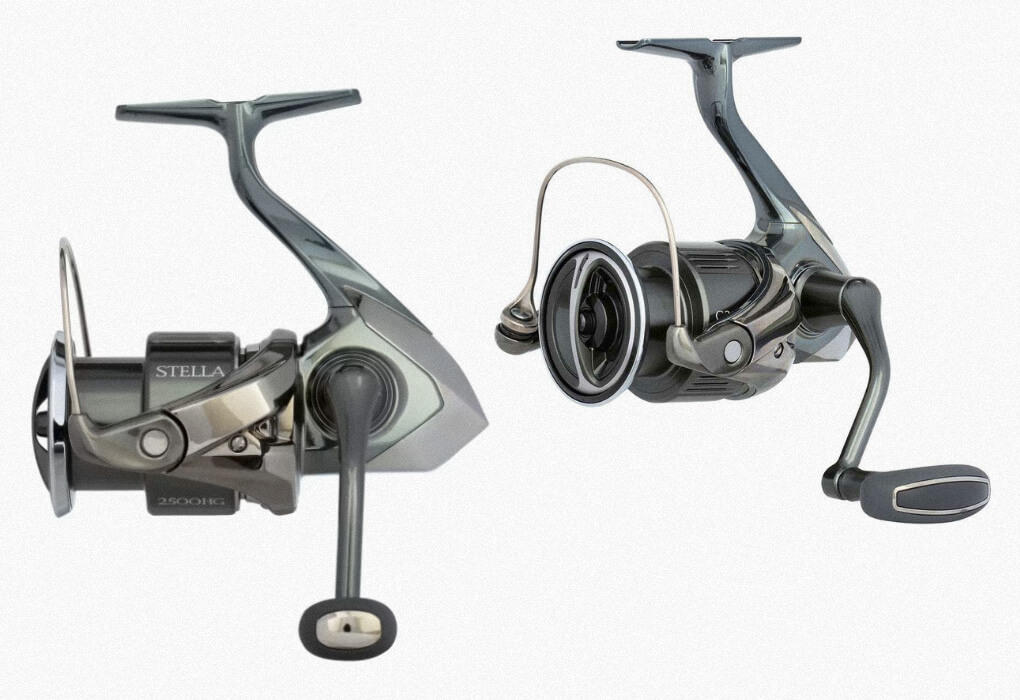
Specs
- Type: Spinning
- Gear Ratio: 5.1:1, 6.2:1
- Weight: 6 oz.
- Bearings: 12+1
- Line Capacity: 6/110
Pros
Cons
Why We Chose It
Oh boy…where do I start? Let’s begin with the most noticeable feature that I noticed when I tested this reel. THE RETRIEVE.
I’m not exaggerating when I say this is the smoothest spinning reel I have ever used in my entire life. When turning the handle there were times where I thought this reel was battery powered.
The spool turns with the slightest touch or effort due to what they call the Infinity Drive system.
So instead of having the main shaft supported by the pinion gear, it’s now supported by a new low friction bushing that significantly decreases resistance which results in the lightest winding reel in the industry.
Also the rigidity of the reel is obvious. There’s no give or flex in any section of the reel. The reel works in unison without any give in any of the gears, reel seat, or spool.
The Infinity Loop and Anti Twist Fin are responsible for the best level winding I have ever felt. There is no sagging tension whatsoever with this reel.
The Shimano Stella FK Spinning Reel comes in two models with gear ratios of 5.1:1, and 6.2:1.
The reel is available in right hand or left hand retrieval.
I paired this reel with my Shimano Teramar PX Southeast Spinning Rod during my test. I was able to catch seven bass that were busting shad along a drop-off that was spilling out of the marsh.
This reel is special.
It’s like somebody dared Shimano to spare no expense with making this reel. It’s made with the finest materials including liberal use of C14 and 13 total ball bearings (the more bearings, the smoother the reel)
The downside is obviously the price with it coming in at over 700 bucks but hey, you get what you pay for.
The Shimano Stella FK Spinning Reel is a reel that towers above all other reels in my opinion.
There was no other reel that I tested that came close to this reel. I’m already budgeting for a chance to get one in the near future. How many more days to Black Friday?
Best Budget Spinning Reel for Bass
Abu Garcia Elite Max Spinning Reel
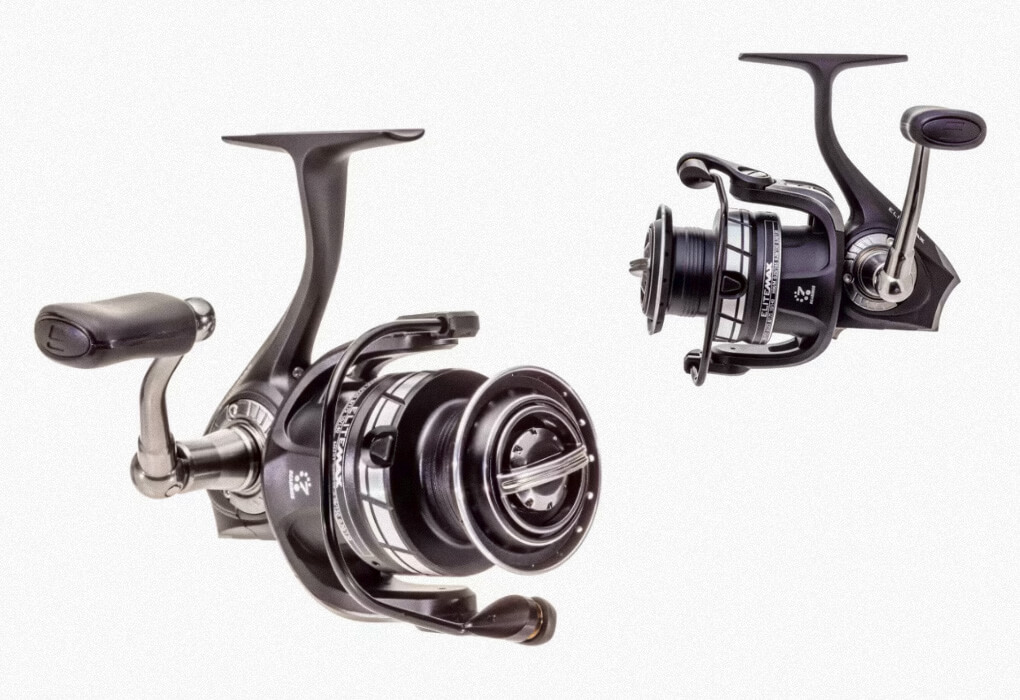
Specs
- Type: Spinning
- Gear Ratio: 6.2:1
- Weight: 8.5
- Bearings: 6+1
- Line Capacity: 8/175
Pros
Cons
Why We Chose It
This little reel is quite an overachiever as I was surprised that it was able to check off all of the boxes when it comes to weight, material makeup, and casting distance.
Add to it the under $75 price tag and the Elite Max was our choice for Best Budget Spinning Reel for Bass.
The Abu Garcia Elite Max Spinning Reel comes in two sizes: 30 and 40. It has a gear ratio of 6.2:1
The reel is available in right hand or left hand retrieval.
When testing this reel the biggest thing I noticed was its ability to cast farther than any of the other budget reels that I tried.
It’s because of the Lip Design or to put it in fancy company lingo, it’s Rocket Spool Lip Design.
Basically this means the line moves back and forth at a slower speed resulting in the line flowing off the reel smoother.
This explains my long casts when using it. I was able to catch five marsh bass that were gathered back in a duck pond.
I was using a weightless Matrix Shad on a worm hook which is a very light lure. The reel casted beautifully and I hit all my targets.
The Carbon drag system also had a high-end feel and sound to it when the biggest bass (2.6 pounds) made a quick run away from me after it hit.
One bad thing about this reel is that it only comes in two sizes which are size 30 and 40 so if you’re looking for a smaller reel I would check out the Plueger President Spinning Reel which is very similar to this reel and comes in sizes 20 and 25.
Overall, the Abu Garcia Elite Max Spinning Reel impressed me and I would recommend it for those fishermen who are beginners and looking for a reel to start with.
The price point and all the features make it a definite winner in my book!
There are always premium reels that you can work your way up to like the Shimano Stella FK Spinning Reel.
Best Spinning Reel for Big Bass
PENN Battle lll Spinning Reel
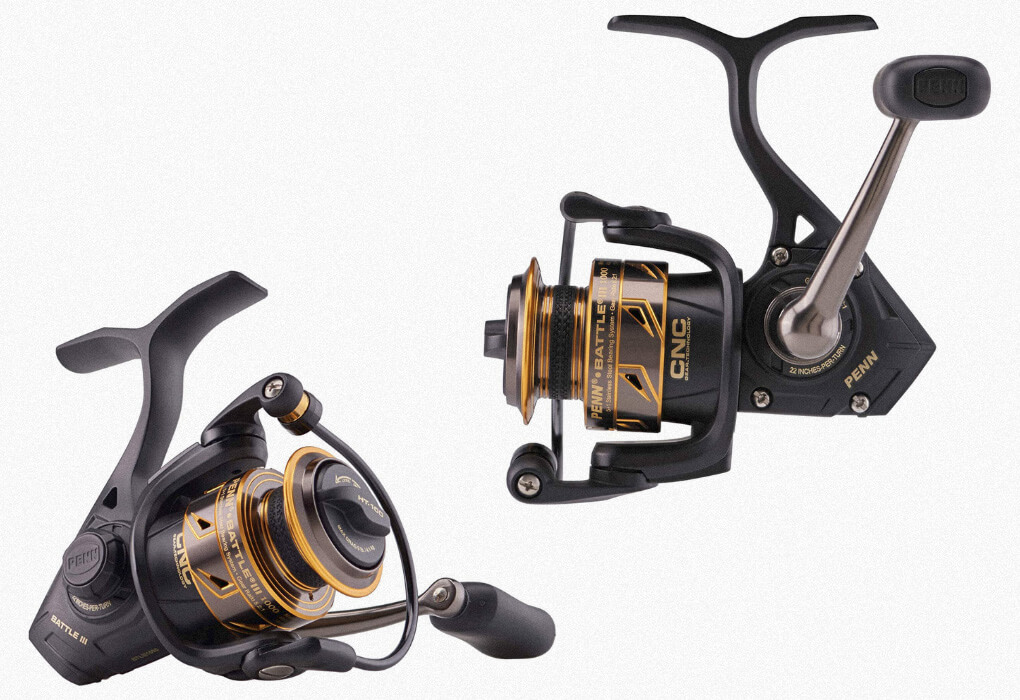
Specs
- Type: Spinning
- Gear Ratio: 4.2:1, 4.2:7, 5.2:1, 6.2:1, 7.0:1
- Weight: 9.7
- Bearings: 5+1
- Line Capacity: 10/165
Pros
Cons
Why We Chose It
Let me start out by saying even before my trophy lake test, I’ve used this reel for catching big bass and have even used it for redfish in the marsh so I knew what to expect as far as strength goes.
The PENN Battle lll Spinning Reel comes in 12 models with gear ratios of 4.2:1, 4.2:7, 5.2:1, 6.2:1, and 7.0:1.
The reel is available in right hand or left hand retrieval. If you’ve ever used the older PENN Battle ll reel, you will notice that the Battle lll is a heck of a lot smoother.
That’s because the older model used stock gears that fit together.
The new PENN Battle lll is CNC machined, which means the gears are cut from one block of metal which makes for a PERFECT fit. And you can tell when you reel this thing!
It’s got the smoothest retrieve of all the reels and it’s because of its new CNC Gear Technology which is plastered all over the reel just to make sure you know it!
The reel made very long casts which was helpful as I approached a patch of lilies and I was able to witness a 5-pound bass blow up on my hollow-bodied frog. What a sight that was!
I was able to rip him out of the lilies quickly and bully him to the boat. This reel doesn’t play!
After that I put 7 more bass in the boat including a 4-pounder and the reel performed wonderfully.
The HT-100 Carbon Fiber Drag System made a big difference as the drag pull was smooth and without any sporadic jerks.
This is important when catching larger fish. You don’t want the line being pulled out fast, in sudden spurts, as this adds more tension to the line.
The PENN Battle lll Spinning Reel comes in 12 models with gear ratios of 4.2:1, 4.2:7, 5.2:1, 6.2:1, and 7.0:1.
The only downside that I can see is that the reel is slightly heavy but that’s only due to the metal sides on the reel. Also be sure to spray this reel down with WD40 because the metal will corrode after using it in saltwater.
If a metal body is a factor in your decision I can point you to the Lew’s Custom Speed Spin Reel which has an all-aluminum body and performs pretty close to the PENN Battle.
Overall, the PENN Battle is a fantastic reel and offers so many sizes that it will fit any type of saltwater fish you are targeting. Add this reel to your saltwater collection and thank me later!
Best Ultralight Spinning Reel for Bass
Pflueger Patriarch Spinning Reel
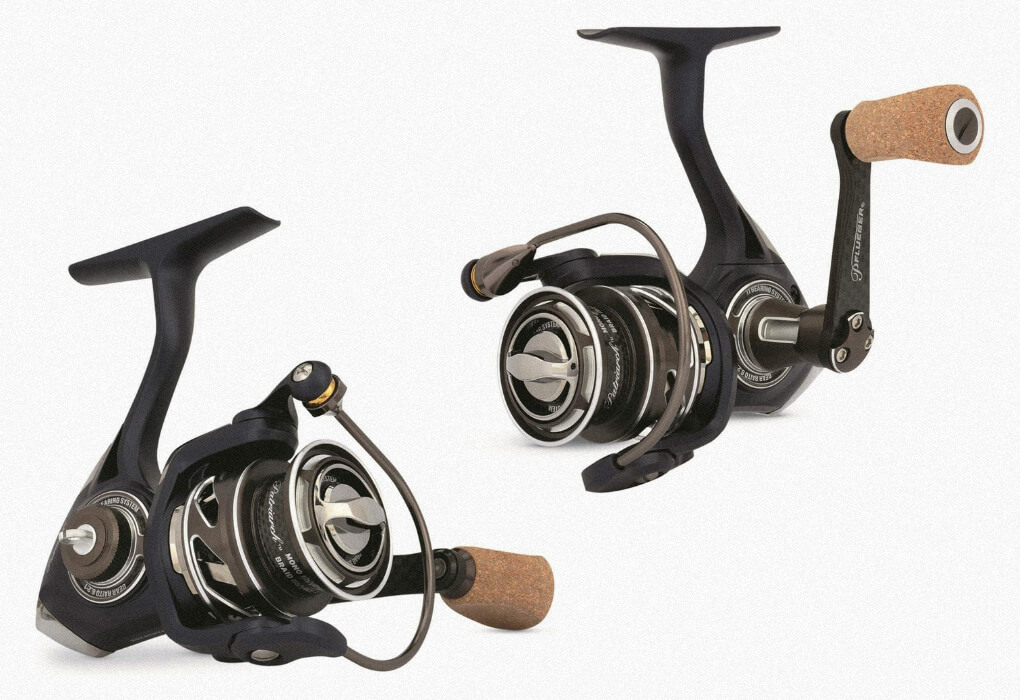
Specs
- Type: Spinning
- Gear Ratio: 6.2:1
- Weight: 6 oz.
- Bearings: 10+1
- Line Capacity: 8/140
Pros
Cons
Why We Chose It
The Pflueger Patriarch Spinning Reel comes in three sizes: 25,30, and 35. The gear ratio on all three sizes are 6.0:1, 6.2:1, and 6.4:1.
The reel is available in right hand or left hand retrieval.
Finding an ultralight spinning reel that fits my needs is quite a challenge so I was really looking forward to testing the handful of reels I brought out to the marsh.
When I tested the Pflueger Patriarch Spinning Reel there were quite a few qualities that impressed me.
The first thing I noticed was the weight. It’s a really light reel coming in at 6oz.
The cutaway rotor and overall small size is what puts this reel in the ultralight category for me. The magnesium body is another reason why this reel is so light.
Now let’s move on to the retrieve. This reel casts and retrieves like a high-end reel.
I was able to cast weightless Flukes and walk them across the water’s surface for some fun top-water bass action. The Patriarch handled all of the bass with ease which is something that some ultralights struggle with.
I really noticed the 11 ball bearings. They made a big difference and the smooth retrieve was the reason that we gave this reel the nod over the Daiwa BG Spinning Reel which was similar in comparison (The BG only has 7 bearings)
If you’re looking for an ultralight spinning reel that not only can handle bream, but can handle bass, the Pflueger Patriarch Spinning Reel is the rod to go with.
It checked all the important boxes that make up a legendary ultralight reel!
How to Choose the Best Spinning Reel?
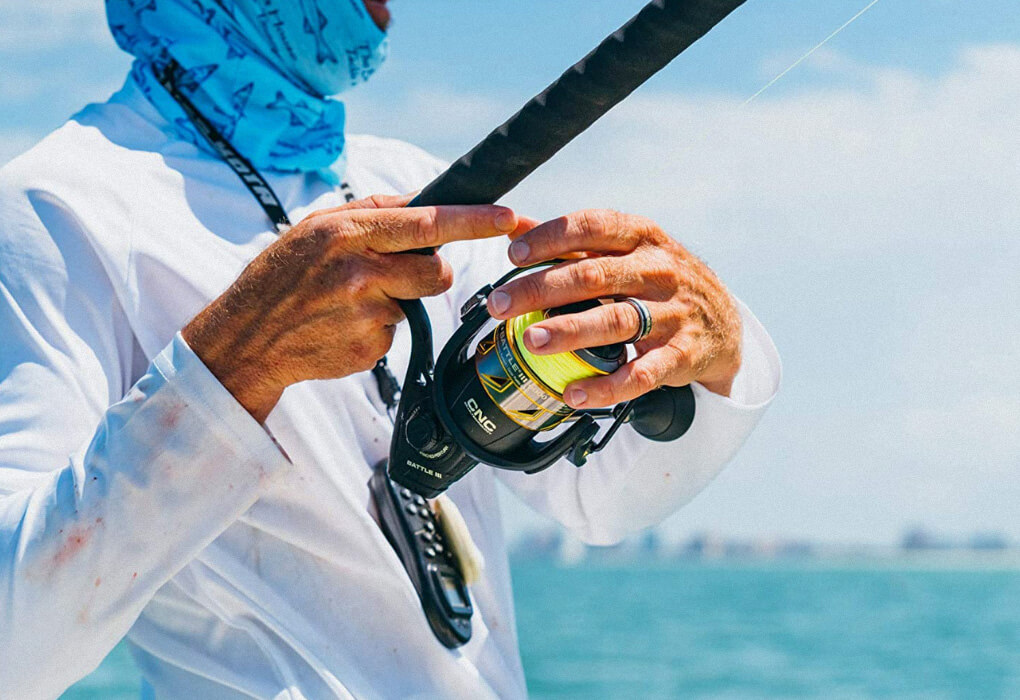
There’s no doubt that spinning reels are the most popular reels on the market. Their versatility and ease of use are what make them the first choice for most anglers.
They can be used to catch small fish like bream and they can be used to catch trophy bass and even larger saltwater fish.
When looking at a spinning reel there are a few important factors that are key to selecting the right reel.
Size
The size of the reel plays a factor when choosing a spinning reel. This is really no surprise as you’ll want a larger size reel when fishing with big baits like crankbaits and swimbaits.
When you’re scaling down and fishing ultralight, a 1000 series reel will pair best with an ultralight rod.
If you’re looking for a reel that is versatile when it comes to bass fishing I’d home in on a size 1500 to 2500 because it allows you to catch all sizes of bass comfortably.
Bearings
The bearing system is what makes the reel retrieve smoothly.
In order to help you understand how the number of bearings affect the smoothness of the retrieve, here’s a really simple equation to remember.
The more bearings in the reel means the smoother the retrieve is going to be.
Also you’ll want to take a look at what the bearings are made of.
Corrosion-resistant stainless steel bearings are best because they won’t wear down over time, and if you maintain it, you won’t have to worry about the dirt and debris getting inside and causing the bearings to corrode.
Gear Ratio
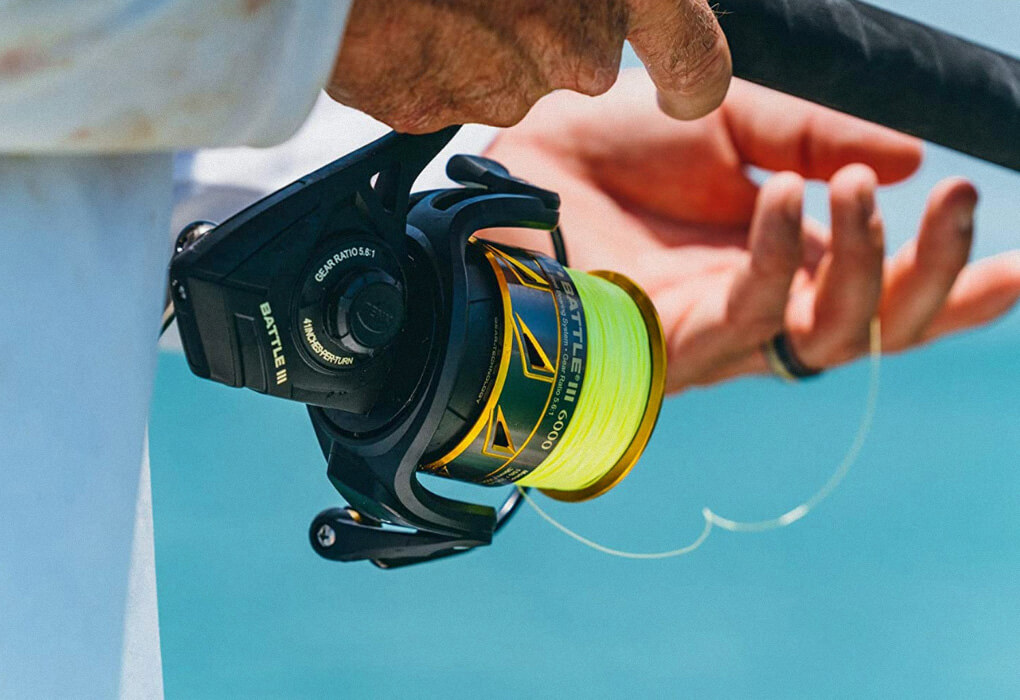
The gear ratio is the number of cranks it takes to get the fishing line to rotate.
So, if you have a 6:1 gear ratio, it means that every time you crank the handle one time, it turns the internal gear six times.
Choosing the right gear ratio depends on what kind of lures you plan on throwing. If you’re going to put this reel on a crankbait rod or a swimbait rod then it should have a lower gear.
If you are using the reel to jig or flip lures then a higher gear is preferred because you’ll need to rip those fish out of the structure quickly so that they don’t get tangled in wood or vegetation.
Construction
You obviously want a reel that is well constructed with durable components in a way that prevents too much debris or water from getting in and around the reel.
The best spinning reels on the market are going to feature a full-metal construction including a side plate and anodized gear that protects you against saltwater.
You’ll also see a lot of reel manufacturers use phrases like “Hagane body” or “G-Free Body.”
These are basically fancy and trademarked ways for them to say that they’re body is made using all metal, it’s locked tight, so nothing gets in, and it won’t flex or bend when you put excess pressure on it.
These are all important factors to consider.
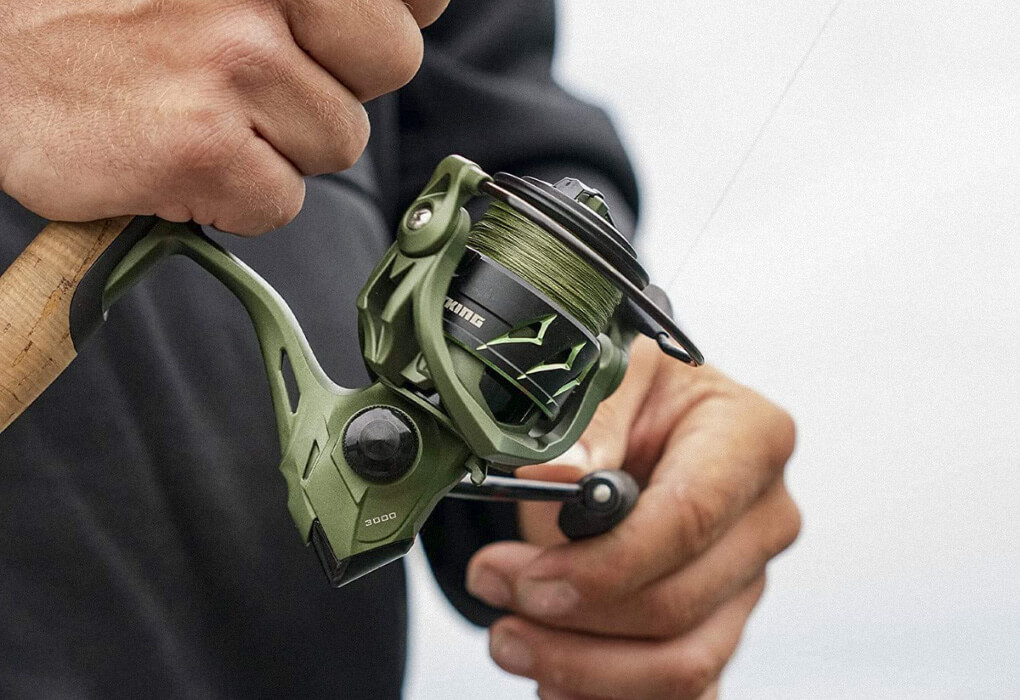
Final Thoughts
During my test of numerous spinning reels at the trophy lake, the main thing I learned was that these reels just keep getting better and better.
There were some really good spinning reels and can honestly say that there were some hard choices that I had to make.
So let’s review our top pick!
For the best spinning reel overall, I chose the Shimano Stradic FL Spinning Reel. It was an outstanding reel and led the pack when it came to material makeup, smoothness, and casting ability.
While the Stradic FL won overall, you really can’t go wrong with all the reels mentioned in this Best Spinning Reel for Bass Guide that I’ve put together.
Give them a try and tell us what you think! We’d love to hear from you!


